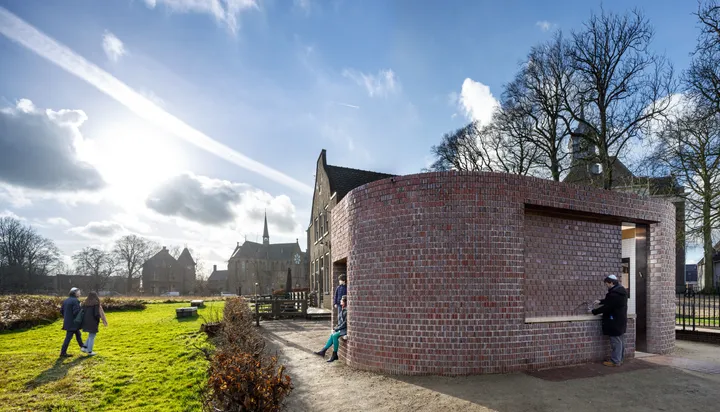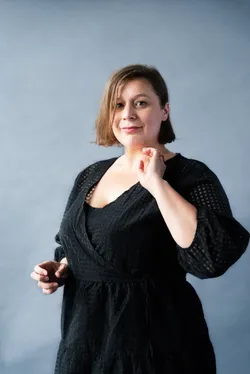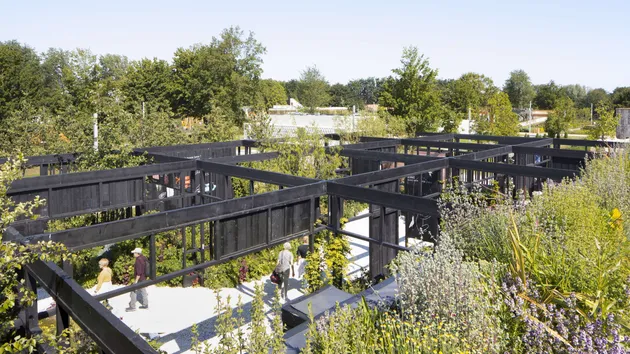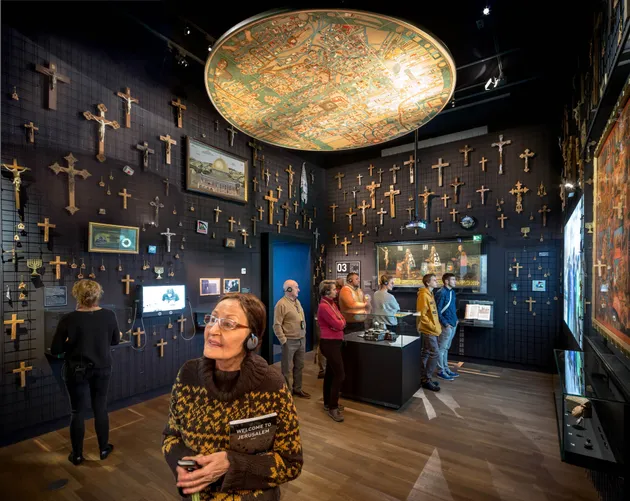HOUSE OF LIFE
Coronel Pavilion, Beth Haim Cemetery
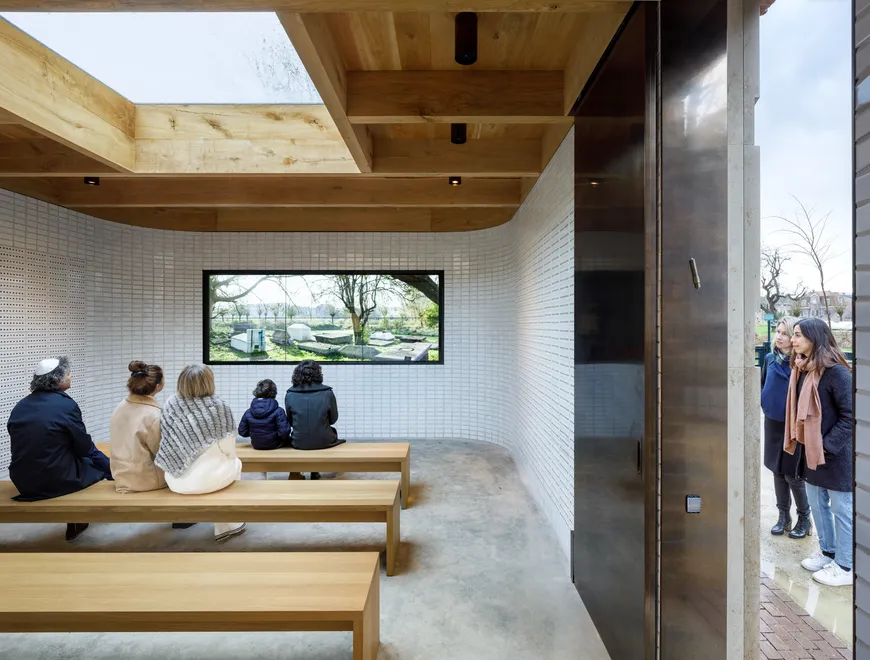
At a 30 minutes beautiful bike ride away from Amsterdam, in the centre of Ouderkerk aan de Amstel, is Beth Haim, one of the oldest Sephardic cemeteries in the world. Here lie the graves of more than 28.000 members of the Portuguese Jewish community of Amsterdam. While the oldest graves date from the 17th century, new ones are still added today. In this way, Beth Haim – Hebrew for ‘House of Life’ – spans more than four centuries of Jewish history on four hectares of ground.
- Location
- Oudekerk aan de Amstel (NL)
- Client
- Stichting Cultureel Erfgoed Portugees-Israëlietische Gemeente
- Year
- 2020
Project data
- 28.0000graves
- 17th ceoldest graves
- 40 m2pavilion
Three-part collage

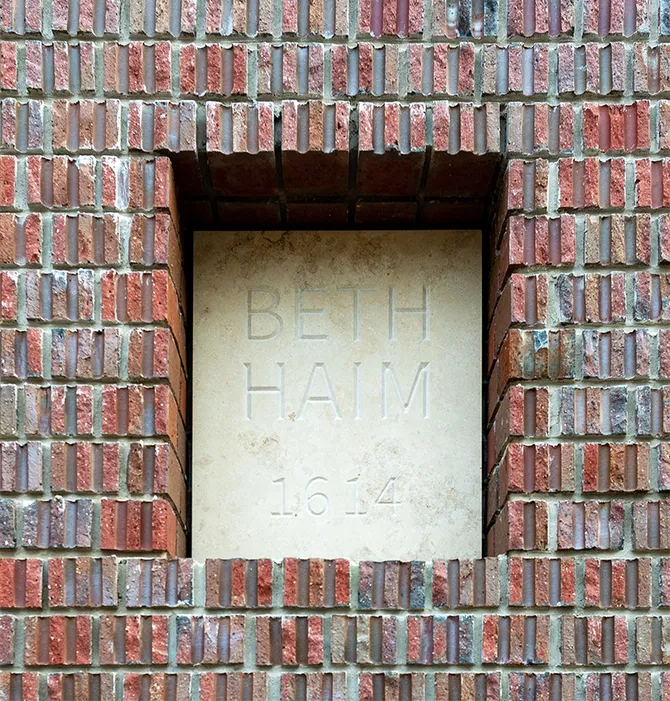
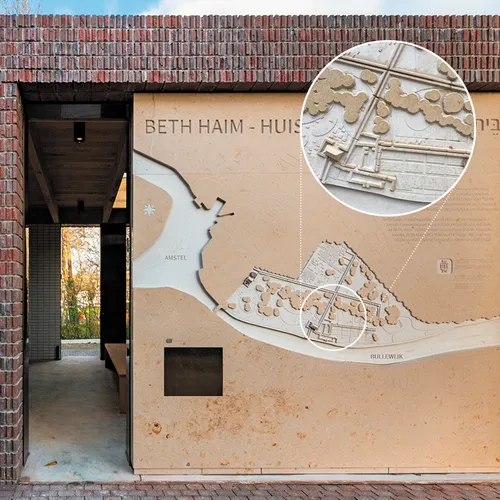
Accessible to the public
Kossmanndejong, together with Loerakker Olsson Architects, has made most of the plans to make this special cemetery more accessible to the public. Paths have been mowed through the downy landscape and new benches have been placed at beautiful resting spots. Stairs and bridges make the formerly cut-off parts of the historic cemetery more accessible. A free to download app developed by YiPP brings to life the stories about the most crucial tombs.
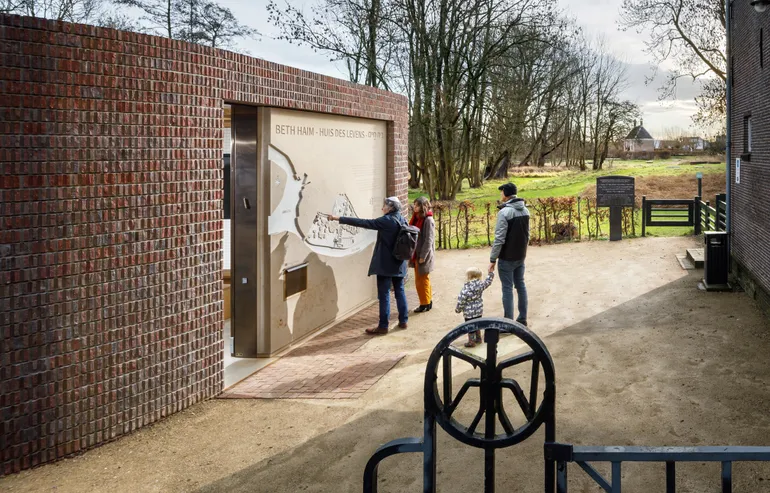
Gesamtkunstwerk
A visitor’s pavilion ties all the ends of the story together. For this pavilion, exterior, interior, architecture, and exhibition design are intertwined. The pavilion relates in colour and material to the historical environment but gives it a contemporary interpretation through the rounded corners and the broken masonry. The circular shape also symbolises the continuity of life and death. A large relief map, milled from marble, has been included in the outer façade. Spaces have been spared from the outer structure to rest, ritually wash hands or to take a kippah.
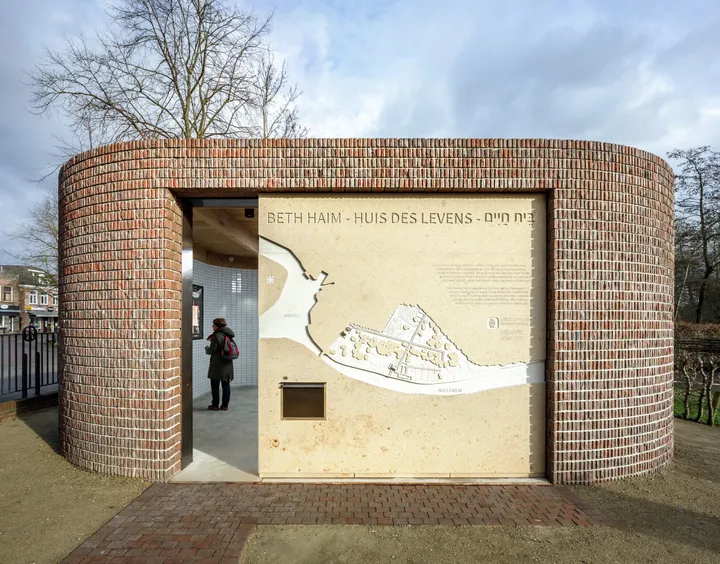
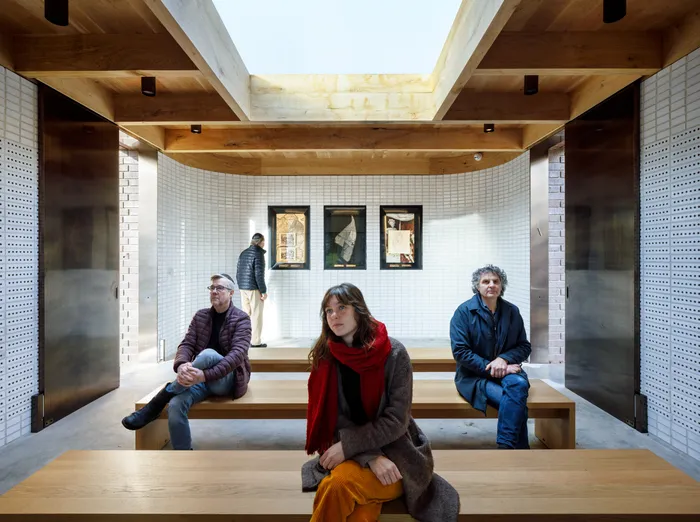
All the elements join in harmony to honor the beauty and decay that come with life.


The transience of life
The starting point of the design was to allow the transience associated with this historic cemetery to be reflected in all the materials used: the broken masonry in the facade, the soft natural stone elements, the weathered brass of the entrance doors, the roof construction of untreated solid oak and the benches of the same wood. All the elements join in harmony to honor the beauty and decay that come with life. The interior pays tribute to the name ‘House of Life’ with its light space and large skylight. An ever-changing, sparkling world that – with its craquelé, ivory-glazed tiles – plays with the light.
